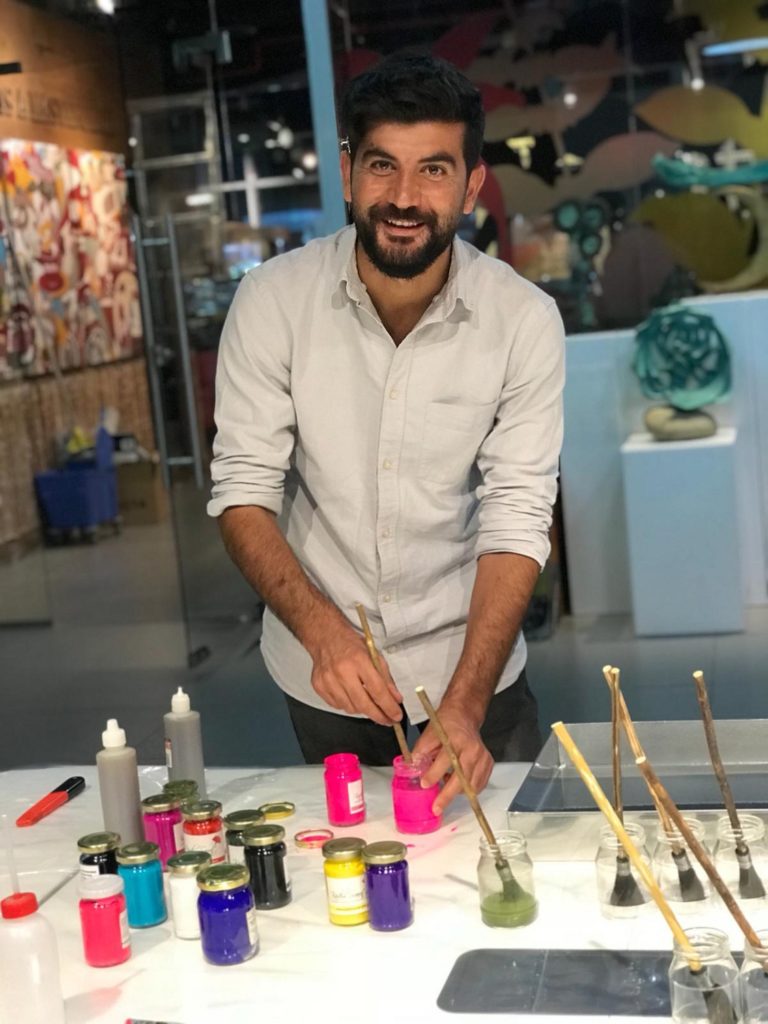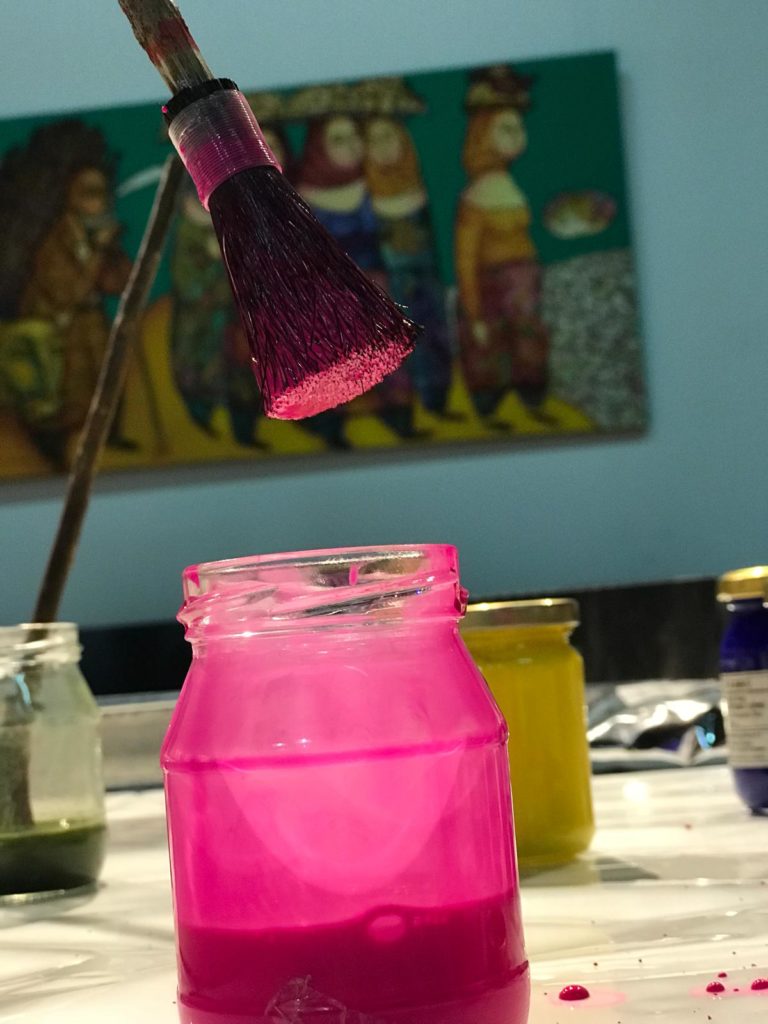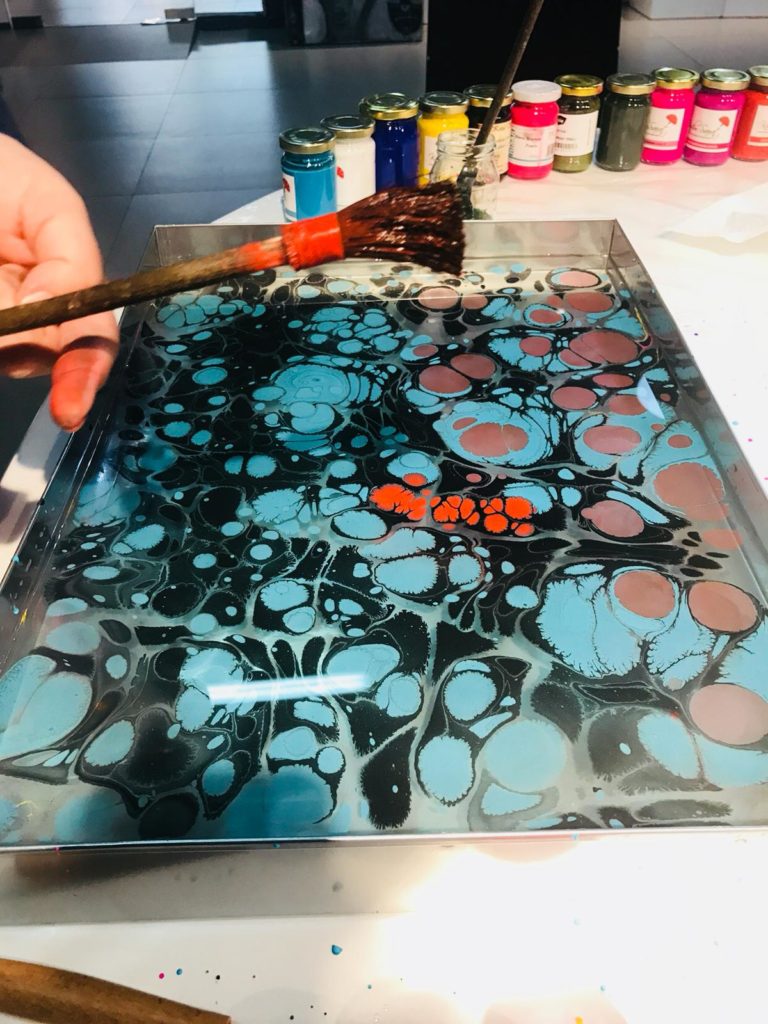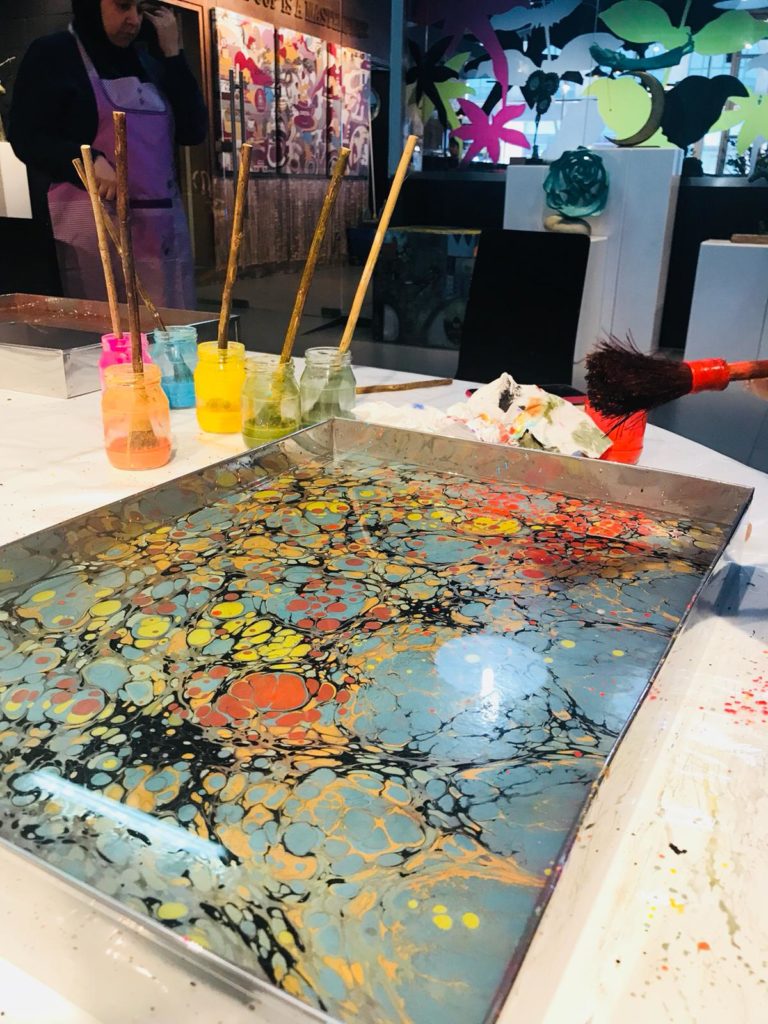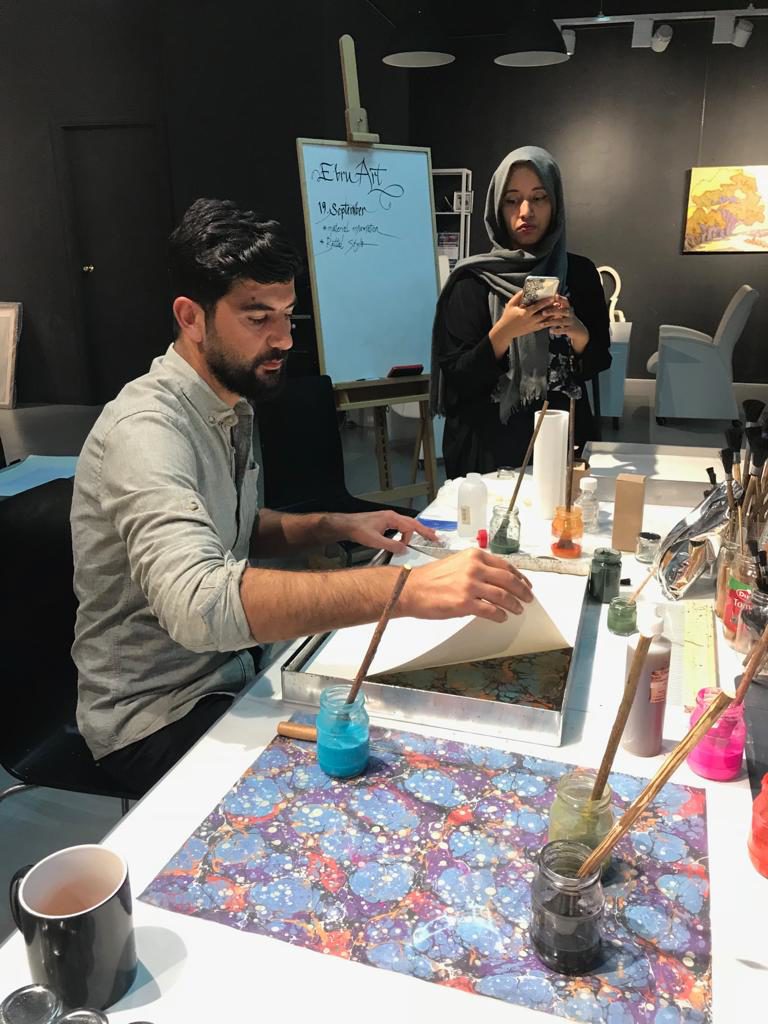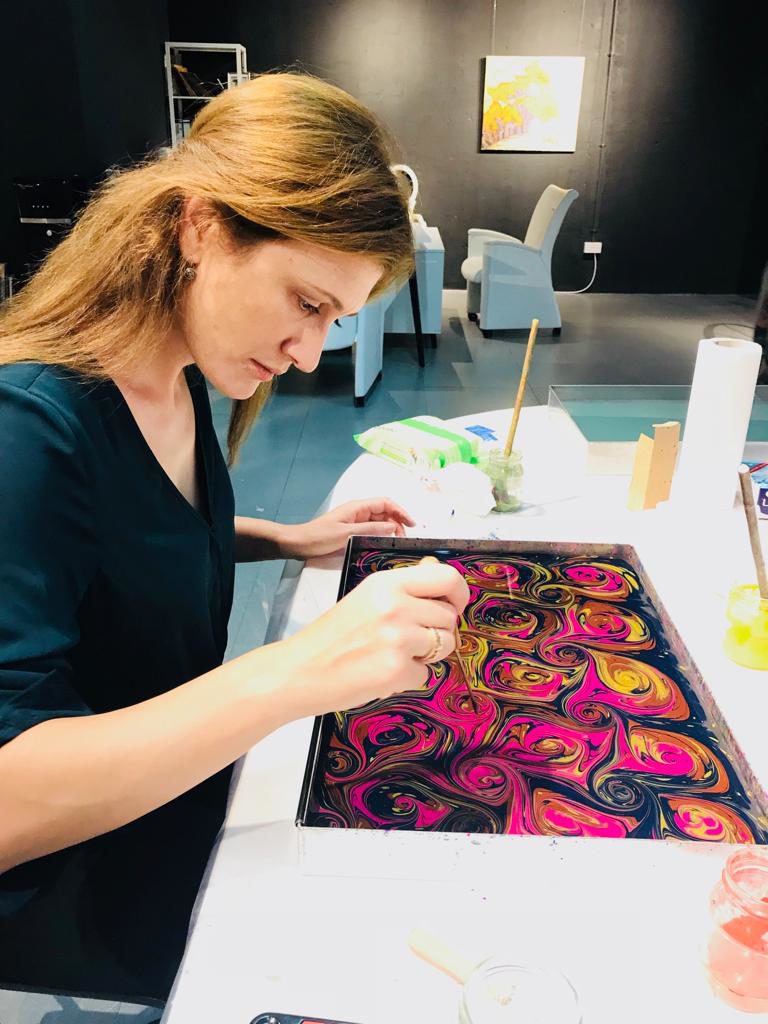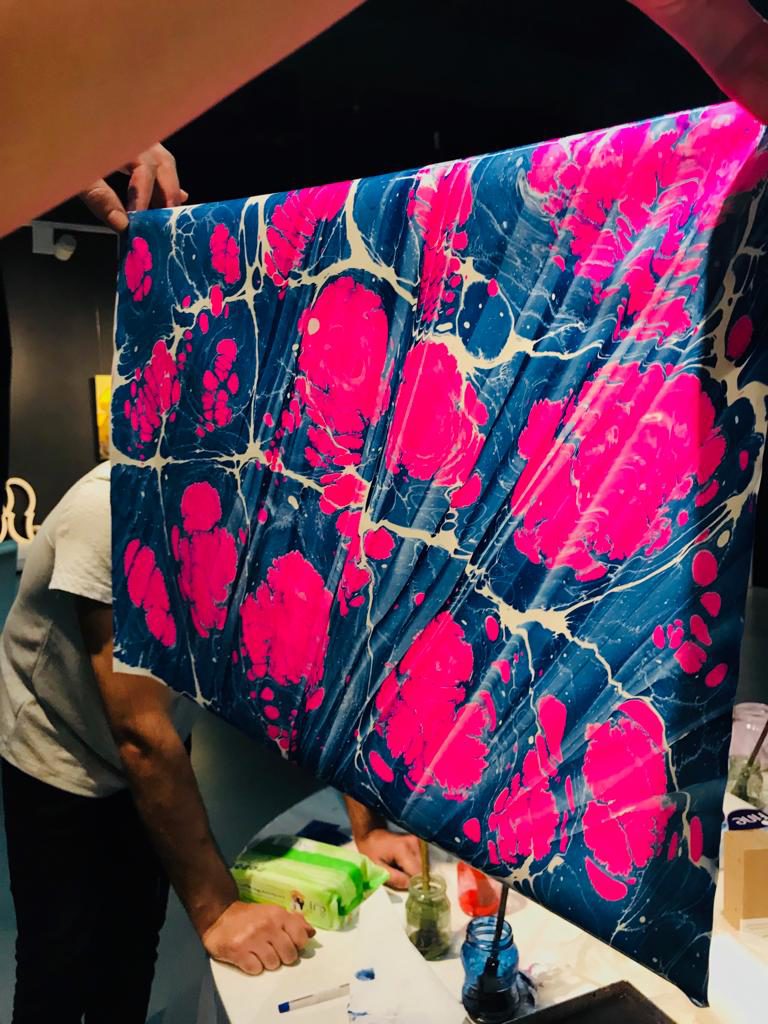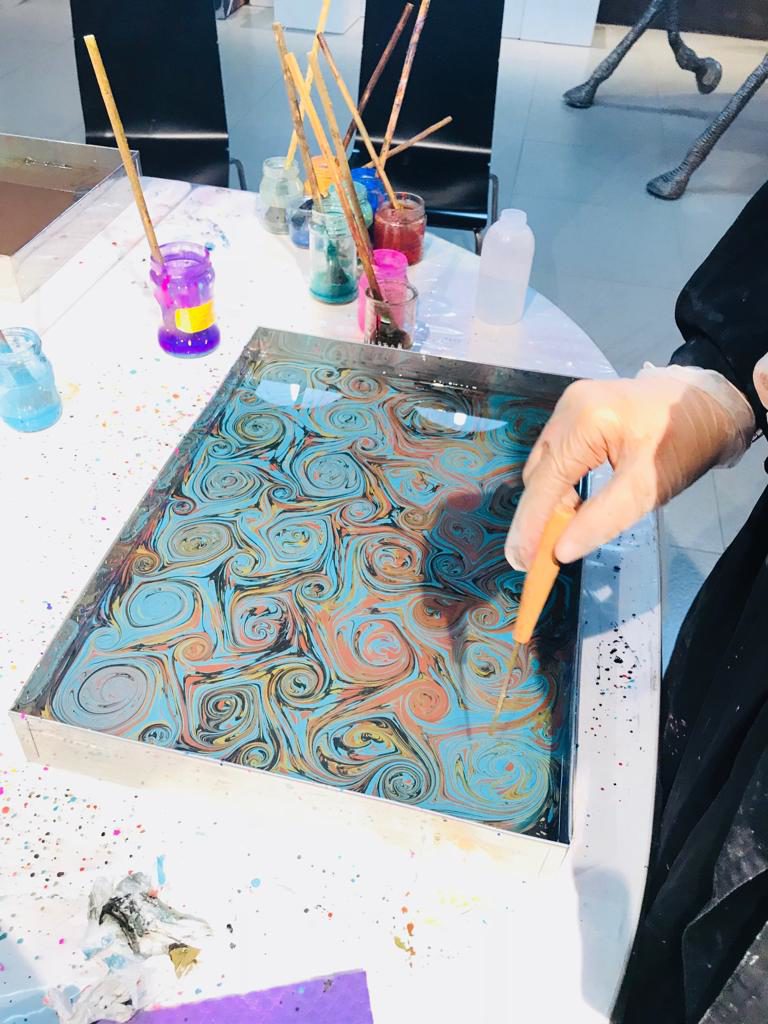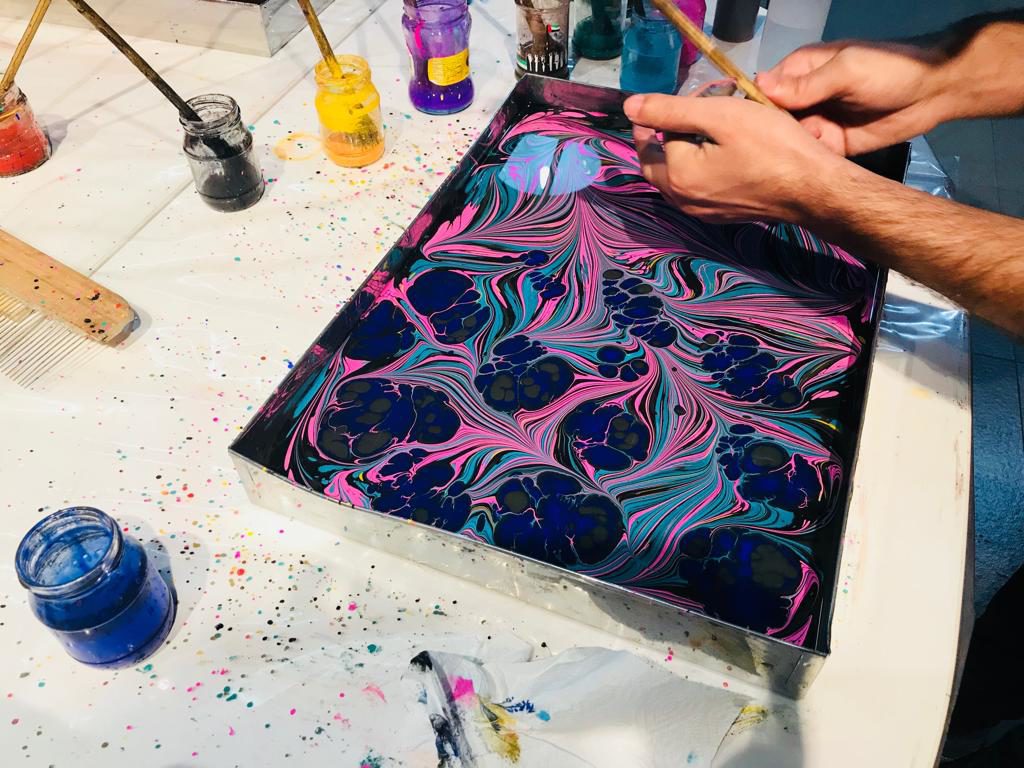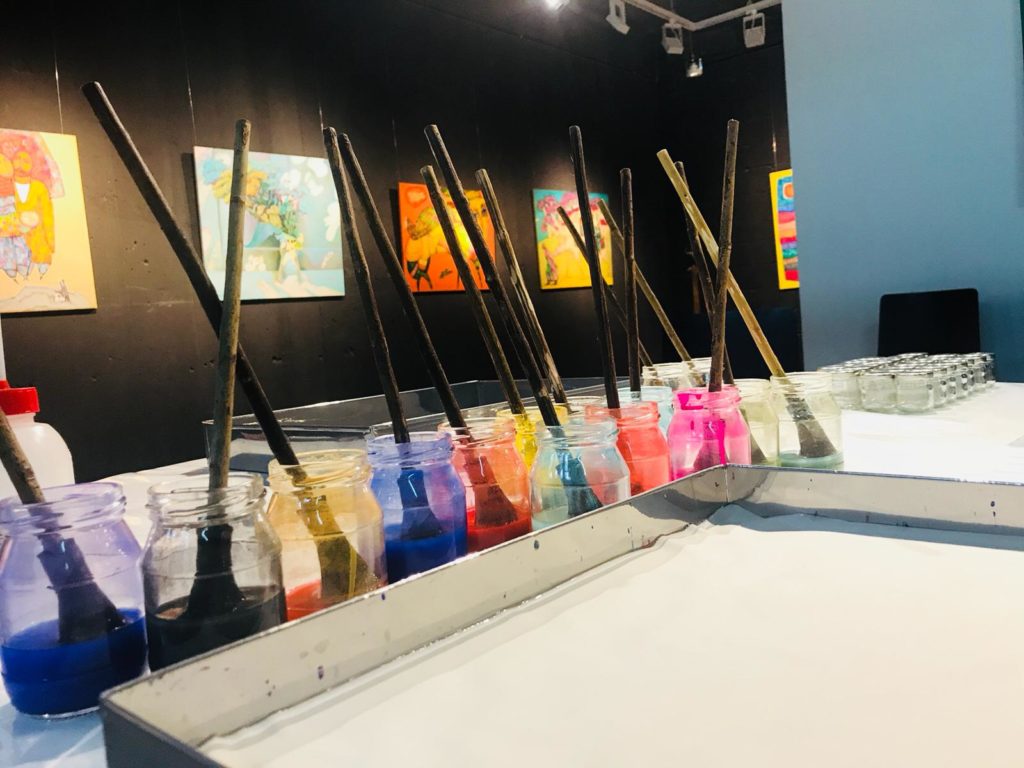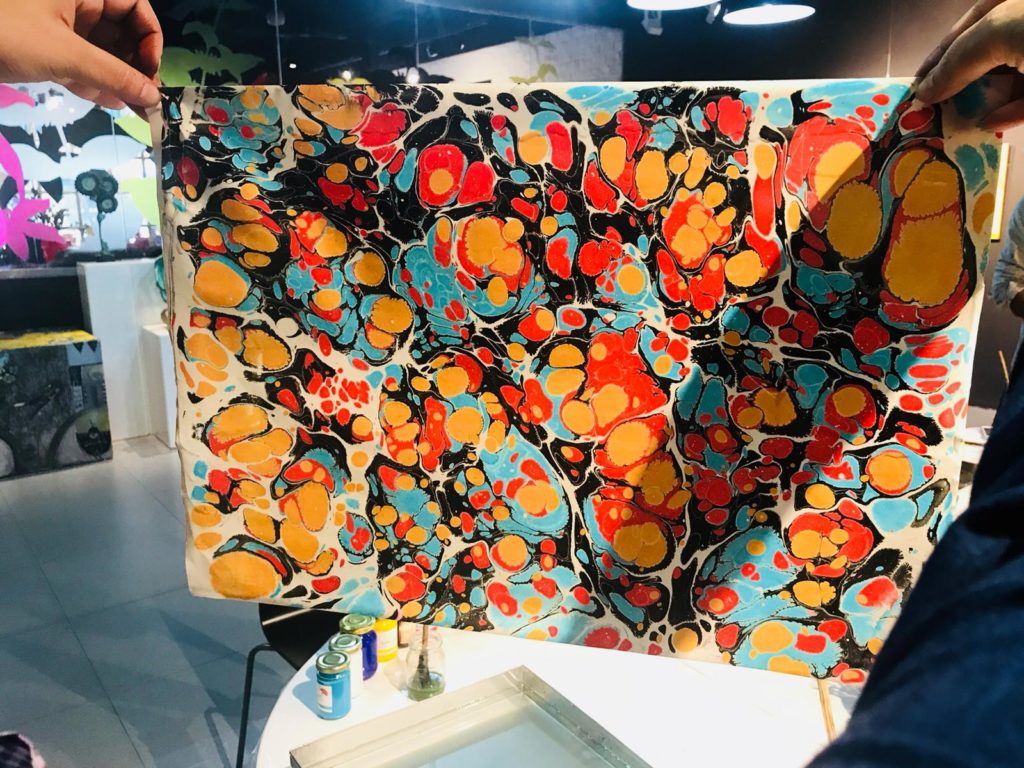Thanks

Ebru Master Class by Turkish artist Abdulvahab Ertekin
Traverse through the magnificence of EBRU – with the Turkish master Abdulvahab Ertekin
N2N Gallery is proud to invite all aspiring and established artists in Abu Dhabi to work with and learn from the Turkish artist Abdulvahap Ertekin. He was a student of fine arts from high school to the Istanbul Mimar Sinan Fine Arts University. Since then he has been travelling around the world giving classes and participating in exhibitions. He dedicates his life
View more...Traverse through the magnificence of EBRU – with the Turkish master Abdulvahab Ertekin
N2N Gallery is proud to invite all aspiring and established artists in Abu Dhabi to work with and learn from the Turkish artist Abdulvahap Ertekin. He was a student of fine arts from high school to the Istanbul Mimar Sinan Fine Arts University. Since then he has been travelling around the world giving classes and participating in exhibitions. He dedicates his life in propagating and enlightening art enthusiasts the charisma of Ebru art. With his experience of lecturing and teaching this unique technique in many different countries, we believe he is an ideal master to unveil the fascinating Ebru for our students. Besides Ebru, his expertism includes designing Arabic & Latin calligraphy, pencil drawing and painting using oil, acrylic and water colours.
Ebru is the art of creating colorful patterns by sprinkling and brushing color pigments on a pan of oily water and then transforming this pattern to paper. Like all the classical Ottoman arts, the art of Ebru was one which was not taught by writing or explanation, but rather was a branch of art in which students were trained by means of the “master/apprentice” system. The special tools of the trade are brushes of horsehair bound to straight rose twigs, a deep tray made of unknotted pinewood, natural earth pigments, cattle gall and tragacanth. Ebru is believed to be invented in the thirteenth century Turkistan. Calligraphers and artists used this technique to decorate books, imperial decrees, official correspondence and documents.
Abdulvahap is an artist who’s intently seeking to find new challenges in teaching this unique art across the world and he finds it an honour to teach the students at the N2N gallery.
This new series of master classes will give you a unique opportunity to understand and learn this ancient art. Moreover, you will create your own works in Ebru with the coherent guidance from our master.
The culmination of the course will be a final masterpiece, which will be exhibited as a part of a group exhibition in N2N Gallery on a graduation day!
Venue: N2N Gallery in the Al Ain Tower, Khalidiyah (ground floor, entrance through Costa Coffee shop)
Master classes duration: 7 days – September 22 to 29; each class of 3 hours duration
Graduation evening: On 30th September, Sunday, 7pm
Timings:
Morning group – 10am to 1pm
Evening group – 6.30pm to 9.30pm (On Saturdays – 2.30pm to 5.30pm)
Friday (September 28) shall be a holiday
Registration: To confirm your participation, please provide us the filled registration form and proof of payment for the course by 10th September
Course fee: 1,785.00 AED (including 5% VAT)
For any questions contact N2N Gallery at art@n2nartgallery.com or call us on 0505951891
Seats are limited, reserve yours today!
Master Class Structure:
Each class will comprise two parts. The first hour will be for preparing the materials for creating the work and the next 2 hours will be to do the art.
These are the steps to follow in order to produce materials essential for Ebru Art:
Step1 – Prepare the mixed water
Before the preparation process, gum tragacanth must be soaked in water for two days( It will be brought by the master, however he will teach the preparation live in class too)
Step 2 – Prepare the dyes
Mix 2 teaspoons of the dye with one cup of water in an empty bottle, then add 2 oz. Ox gall. Now, the liquid pigment is ready to be used for Ebru.
Step 3 – Prepare the container
Pour the gum tragacanth mixture into the metal container, and make sure that there are no bubbles on the surface.
Step 4 – Sprinkle the liquid dye
After preparing colors and water the art work shall began. You shall be learning the following styles in Ebru:
Battal Ebru. This is the oldest pattern we know – the mother, the origin of Ebru designs.
It can be mono or multi coloured. Paints are dripped on the surface of the basin and then transferred onto the paper.
Gelgit Ebru. First a Battal background is set down and designs parallel to the side of the basin corners (diagonally across the basin, starting in one corner) are set by means of a pick, needle or a bradawl. The distance between the parallel lines may vary depending upon the thickness of the point. These parallel lines may be repeated several times in opposite directions using a special comb, Gel-git lines can also be used diagonally.
Sal Ebrusu. First a gel-git pattern is set, and then another same with wider tracks is made diagonally across the first design. These diagonal lines may be drawn in the form of “S” shaped figures.
Tarakli EBRU. This pattern is obtained by working with a comb on a gel-git background, moving the comb against the direction of the first gel-git design. It is also possible to obtain different patterns using combs without using gel-git background.
Flowery Ebru (Necmeddin Ebru). This is a style of Ebru developed by the late master Necmeddin Okyay and is known by his name. Any type of Ebru is set as background (usually a light coloured pattern). On top of this base, the drops of paint are designed into the shape of leaves and flowers with the help of a needle. The flowers generally designed are tulips, carnations, hyacinths, violets, daisies and roses, Of course, it is possible to try other species of flowers.
If time and ability of the students permit, the master is more than happy to teach more styles!
The supplies required for the workshop will be provided by the master for rent.
Other materials required:
- Apron to protect clothing
- Cloth for cleaning brushes
- Plastic bag for rubbish
- Kitchen tissue roll
- Wet wipes
- Soap
*Please note that paint might drop on to clothing in the process of painting, wear something that is allowed to get messy
View less…
